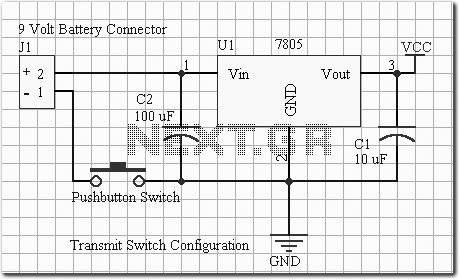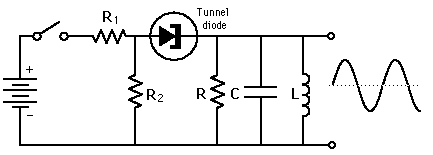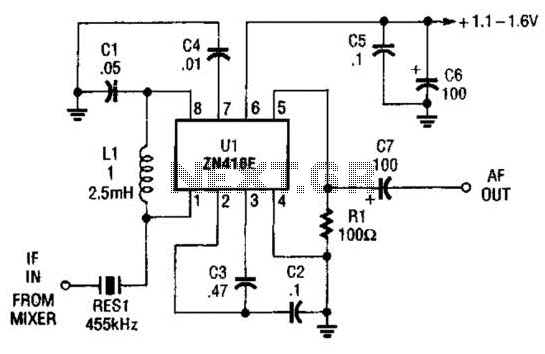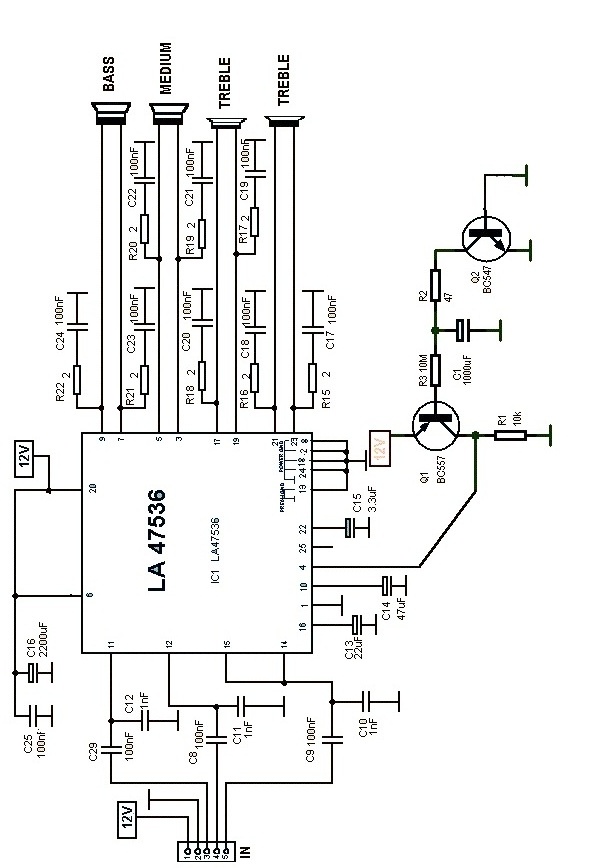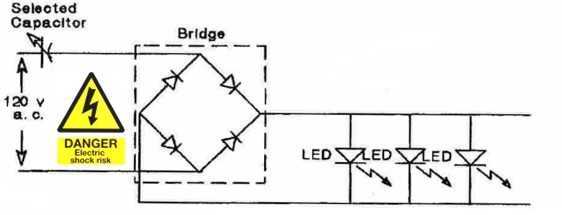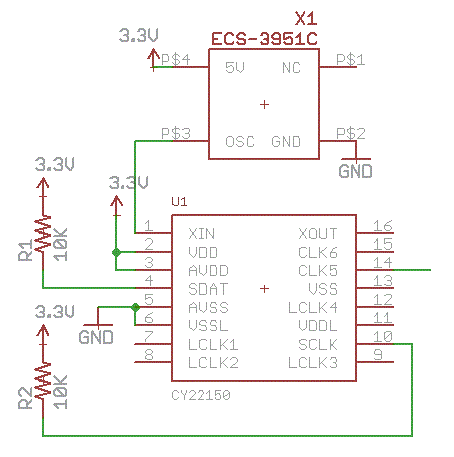
Simple Colpitts Oscillator circuit
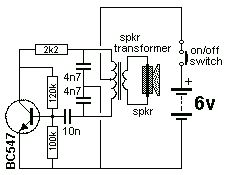
The Colpitts Oscillator is characterized by tapping the mid-point of the capacitive side of the oscillator section. The inductor can be the primary side of a speaker transformer. The feedback comes via the inductor.
The Colpitts Oscillator is a type of electronic oscillator that generates sine waves using a combination of inductors and capacitors. It is known for its simplicity and stability in frequency generation. The oscillator primarily consists of a tank circuit formed by an inductor (L) and two capacitors (C1 and C2) connected in series. The mid-point of the capacitive divider formed by C1 and C2 is where the output signal is taken, which is critical for determining the frequency of oscillation.
In this configuration, the feedback necessary for sustaining oscillations is provided through the inductor. The inductor may be implemented as the primary winding of a speaker transformer, which serves dual purposes: it provides the necessary inductance for the tank circuit and can also couple the generated signal to a load, such as a speaker or another circuit stage.
The frequency of oscillation (f) for a Colpitts Oscillator can be calculated using the formula:
f = (1 / (2π√(L * (C1 * C2) / (C1 + C2))))
This equation illustrates the relationship between the inductance and capacitance values in determining the output frequency. The choice of components significantly impacts the stability and performance of the oscillator. Proper biasing and component selection are essential to ensure reliable operation, especially in applications where frequency precision is critical.
The Colpitts Oscillator is widely used in various applications, including signal generation in RF circuits, clock generation in digital circuits, and as a local oscillator in communication systems. Its design can be adapted to suit different frequency ranges by selecting appropriate values for the inductor and capacitors, making it a versatile choice for engineers in the field of electronics.The Colpitts Oscillator is characterised by tapping the mid-point of the capacitive side of the oscillator section. The inductor can be the primary side of a speaker transformer. The feedback comes via the inductor.. 🔗 External reference
The Colpitts Oscillator is a type of electronic oscillator that generates sine waves using a combination of inductors and capacitors. It is known for its simplicity and stability in frequency generation. The oscillator primarily consists of a tank circuit formed by an inductor (L) and two capacitors (C1 and C2) connected in series. The mid-point of the capacitive divider formed by C1 and C2 is where the output signal is taken, which is critical for determining the frequency of oscillation.
In this configuration, the feedback necessary for sustaining oscillations is provided through the inductor. The inductor may be implemented as the primary winding of a speaker transformer, which serves dual purposes: it provides the necessary inductance for the tank circuit and can also couple the generated signal to a load, such as a speaker or another circuit stage.
The frequency of oscillation (f) for a Colpitts Oscillator can be calculated using the formula:
f = (1 / (2π√(L * (C1 * C2) / (C1 + C2))))
This equation illustrates the relationship between the inductance and capacitance values in determining the output frequency. The choice of components significantly impacts the stability and performance of the oscillator. Proper biasing and component selection are essential to ensure reliable operation, especially in applications where frequency precision is critical.
The Colpitts Oscillator is widely used in various applications, including signal generation in RF circuits, clock generation in digital circuits, and as a local oscillator in communication systems. Its design can be adapted to suit different frequency ranges by selecting appropriate values for the inductor and capacitors, making it a versatile choice for engineers in the field of electronics.The Colpitts Oscillator is characterised by tapping the mid-point of the capacitive side of the oscillator section. The inductor can be the primary side of a speaker transformer. The feedback comes via the inductor.. 🔗 External reference
Warning: include(partials/cookie-banner.php): Failed to open stream: Permission denied in /var/www/html/nextgr/view-circuit.php on line 713
Warning: include(): Failed opening 'partials/cookie-banner.php' for inclusion (include_path='.:/usr/share/php') in /var/www/html/nextgr/view-circuit.php on line 713
